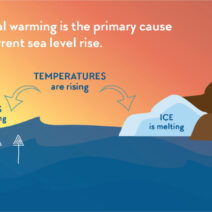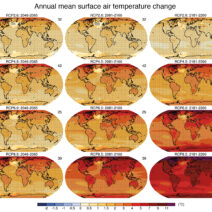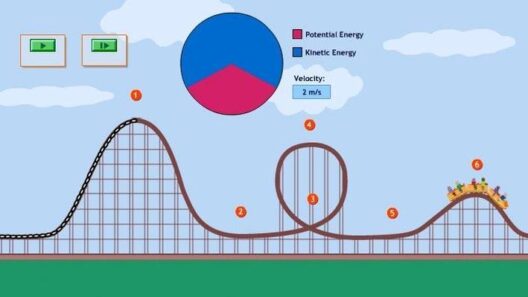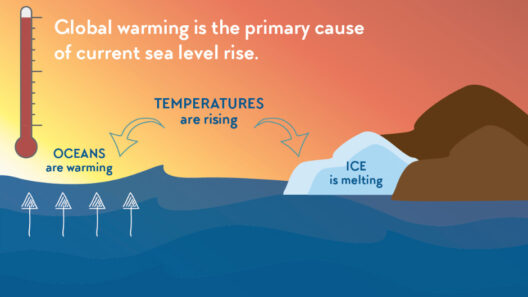The urgent discourse surrounding global warming has provoked myriad responses across societies, economies, and ecosystems. Beneath sensational headlines, however, lies a complex tapestry of scientific inquiry and empirical observation that is crucial for understanding the multifaceted implications of rising temperatures. This exposition delves into the science of global warming, explicating not only its anthropogenic mechanisms but also its extensive impacts that transcend mere weather fluctuations.
At the crux of global warming is the greenhouse effect, a natural and essential phenomenon. Solar radiation penetrates Earth’s atmosphere, with certain gases—chief among them carbon dioxide (CO2), methane (CH4), and nitrous oxide (N2O)—trapping heat and thereby maintaining a hospitable climate. Yet, the industrial activities of humanity have exacerbated this effect through excessive emissions, resulting in a discernible change in global temperatures. The Intergovernmental Panel on Climate Change (IPCC) reiterates that carbon emissions have risen precipitously since the late 18th century, primarily due to fossil fuel combustion and land-use modifications.
As temperatures ascend, so too does the urgency to comprehend their consequences. The ramifications of global warming are not confined to temperature rises; they manifest as extreme weather events, sea-level rise, and ecological upheaval. For instance, the increasing frequency and intensity of heatwaves directly threaten human health, agriculture, and natural systems. The bio-physiological responses of organisms to heightened temperatures can result in species migration, shifts in phenology, and heightened mortality rates in vulnerable populations.
The polar regions serve as bellwethers for climate change, with Arctic areas warming disproportionately to the global average. Arctic sea ice diminishes annually, leading to altered habitats for species such as polar bears and seals. This decline incites a cascading effect throughout the food web, influencing not merely local ecosystems but also global weather patterns as well. The thawing permafrost releases vast quantities of methane, further exacerbating climate change. This interplay elucidates the spiral of climate feedback loops—where action begets further action—emphasizing the intricate interactions within Earth’s biosphere.
However, the effects of global warming extend beyond the natural sciences. Socioeconomic systems are intricately entwined with climatic conditions, which becomes evident in agricultural productivity. Crop yields fluctuate with rising temperatures and altered precipitation patterns; certain species face extinction, while invasive species flourish in newly hospitable environments. The complexities of food security thus emerge, as regions that rely on sensitive agricultural systems grapple with diminishing resources and shifting growing seasons. This dynamic spurs higher prices and exacerbates existing inequalities, leading to conflicts and migration challenges.
Migration increasingly becomes a salient issue as communities recognize the untenable nature of their living conditions. Climate refugees—individuals displaced due to environmental changes—find themselves existing at the intersection of humanitarian, social, and legal dilemmas. Countries that contribute least to greenhouse gas emissions often bear the brunt of climate change impacts, highlighting a stark injustice within the current geopolitical landscape. The challenge is not merely local but embodies a global ethos of responsibility and collaboration.
Mitigating the consequences of global warming requires a multifaceted approach. Renewable energy sources offer a pivotal pathway toward reducing carbon footprints. Solar, wind, hydroelectric, and geothermal technologies are not merely feasible alternatives; they also represent a paradigm shift in our perception of energy consumption. Transitioning to a circular economy fosters resource efficiency while minimizing environmental degradation. Legislative action, based on scientific evidence and community participation, underpins effective climate policy. Initiatives that promote carbon pricing, cap-and-trade systems, and investment in green technologies hold promise for achieving sustainable development.
Moreover, public awareness and education play instrumental roles in addressing global warming. Knowledge dissemination empowers individuals and communities to make informed choices. Grassroots movements advocating for sustainable practices and policies underscore the vital importance of civic engagement. Each individual’s actions—whether adopting conservation practices, reducing waste, or advocating for policy change—collectively contribute to a more sustainable future. From local to global scales, the resonance of environmental stewardship cannot be overstated.
Scientific research continues to advance our understanding of climate systems. Innovations in climate modeling improve predictions and identify vulnerabilities within ecosystems and human infrastructure. Studies in climatology elucidate the potential scenarios that await humanity, enabling proactive measures rather than reactive ones. The apparent urgency of the climate crisis necessitates an interdisciplinary approach—one that harmonizes environmental science with sociology, economics, and ethics. Through collaboration and innovation, humanity may navigate the complexities presented by global warming.
In conclusion, the narrative surrounding global warming is woven from strands of scientific inquiry, human experience, and emergent challenges. It is imperative that society comprehends not only the causes but also the extensive repercussions of rising global temperatures. By fostering understanding and championing actionable solutions, a concerted effort can be made toward mitigating the multifarious impacts of climate change. It serves as a reminder that the choices made today will reverberate through generations, thereby defining the resilience of our planet for posterity.







